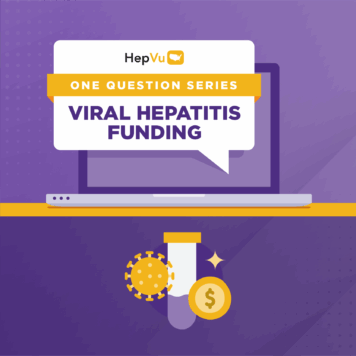Michelle Rose, MBA, is the Population Health Manager for Norton Healthcare in Kentucky.
Q: How did you get involved in working in Hepatitis C, especially focusing on perinatal transmission?
I spent close to 20 years working in humanitarian aid, primarily with infectious diseases and HIV in Sub-Saharan Africa. When I returned to the United States in 2016, I joined Norton Healthcare managing a program for blood-borne pathogen screening. At that time, it was an exploratory project looking at data and screening practices to understand how to improve the organization and destigmatize blood-borne diseases such as HIV and Hepatitis C. The data included women of childbearing age and pregnant women in Kentucky.
Due to higher than expected infection rates in the program’s patient population and our proximity to Scott County, Indiana – which experienced an HIV outbreak among people who inject drugs in 2014 – we began to systematically study the patient population. Working with a pediatric infectious disease doctor, we examined the fallout from Scott County’s HIV outbreak and found an almost 90 percent co-infection rate with Hepatitis C among the patient population we were studying. That high level of co-infection encouraged me to study perinatal transmission.
Q: Norton Healthcare began screening all pregnant women for Hepatitis C in 2016. What was the reason for this change in policy, and what have you learned since?
Fundamentally, this was a decision made by OB/GYN leadership at Norton in order to make it easier to identify patients with Hepatitis C. Because so many of those examined did have risk factors, we found that it was harder to identify patients that did not have risk factors. For example, instead of saying, “Here are 100 women and 99 of them have risk factors,” it is easier to screen universally.
In addition, Norton delivers approximately 14 percent of all infants in Kentucky or roughly 7,560 live births each year. When we implemented universal screening, the prevalence of chronic Hepatitis C infection in pregnant women was slightly under 4 percent, which is enormous. We have learned that we now need to think less about screening and more about linkage to care. Optimally, we want to identify Hepatitis C, if present, during the first prenatal visit and then create a plan of care for the mother and infant after delivery.
Q: In July 2018, Kentucky became the first state to pass legislation requiring health care providers to screen all pregnant women for Hepatitis C. What has the impact been since the new law was passed? Do you believe that other states should adopt similar legislation?
The new screening law has improved linkage to care and aided in our goal of decreasing future infections and disease severity. Six percent of the Hepatitis C-positive pregnant women we identify through screening at Norton have no known risk factors, and 75 percent of the women that were found to be Hepatitis C-positive during their initial prenatal visit did not know they had Hepatitis C infection. This early detection allows for treatment of a disease we would not otherwise know about until it would have progressed to a more severe stage.
In addition to identifying new infections, this legislation has expanded the conversation around prenatal screening for Hepatitis C from a small group of medical specialists to a much broader group of clinicians, researchers, and policymakers. There have been several papers released about the cost-effectiveness of universal screening and the American Association of the Study of Liver Diseases (AASLD) last year recommended that all pregnant women be universally screened. With more attention drawn to this issue and data supporting the effectiveness of testing, we can provide greater resources for linkage to care and, ultimately, greater health outcomes for women and children at risk for Hepatitis C across the country.
Furthermore, because of this law, Kentucky has collected more information about prenatal Hepatitis C in our state. I do think this could benefit other states, particularly where we know there is likely a large number of undiagnosed individuals, like here in the Appalachian region.
Q: Why is universal screening of pregnant women an important method for handling new Hepatitis C infections as well as preventing further new cases?
Pregnancy is a unique time for women because they see health care providers in a comprehensive fashion, and it is a key opportunity to screen for diseases for two or more patients. Understanding that you can screen during pregnancy, deliver a diagnosis, and form a plan of action that people will diligently follow creates a huge opportunity for treatment and elimination of Hepatitis C. What’s more, by screening pregnant women in their childbearing years, we make it possible to prevent women from ever passing the infection on to their infants.
Broadly speaking, this has demonstrated a larger learning opportunity. Women tend to interact with the healthcare system more often than men. And in this case, we can screen women’s other children and their partners, especially if the mother tests positive for Hepatitis C.
Q: With the conclusion of this year’s Hepatitis Awareness Month, what would your message be to the public?
I find Hepatitis C incredibly exciting because it can be cured. I believe there is enough information to destigmatize Hepatitis C, from an infectious disease to a curable chronic infection, but the only way to do this is to get people screened. Hopefully, this knowledge can help people at risk feel more inclined to get tested. It is relatively simple to implement universal testing, and we must make it a part of our elimination strategies.
Norton Healthcare receives funding from Gilead Science’s Frontlines of Communities in the United States (FOCUS) program to support HIV, Hepatitis B, and Hepatitis C screening and linkage to the first medical appointment after diagnosis.




